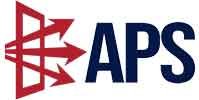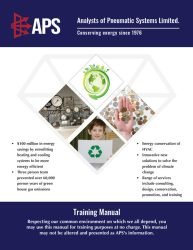
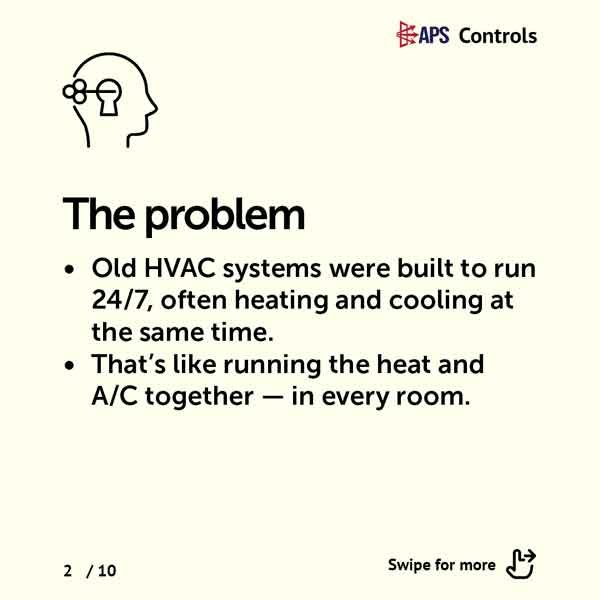
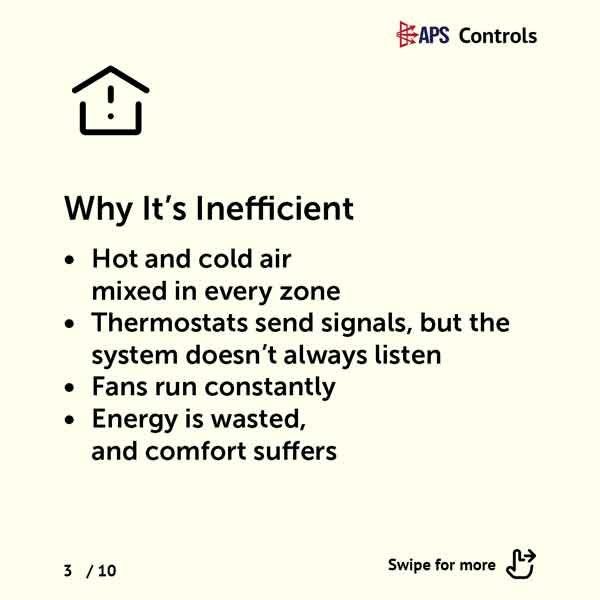
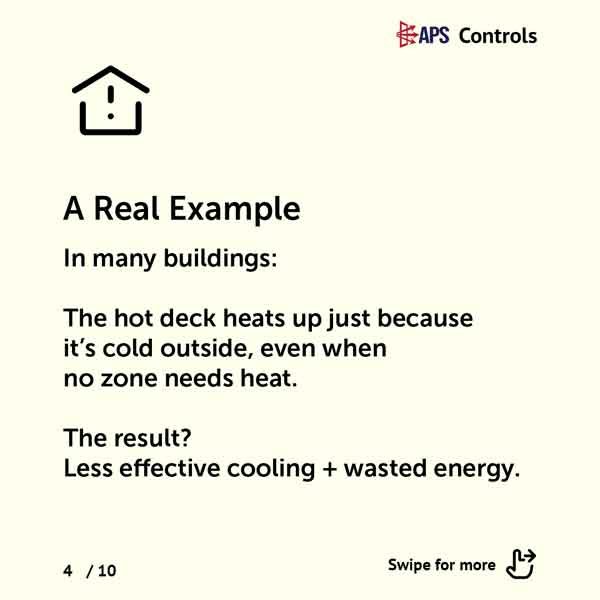
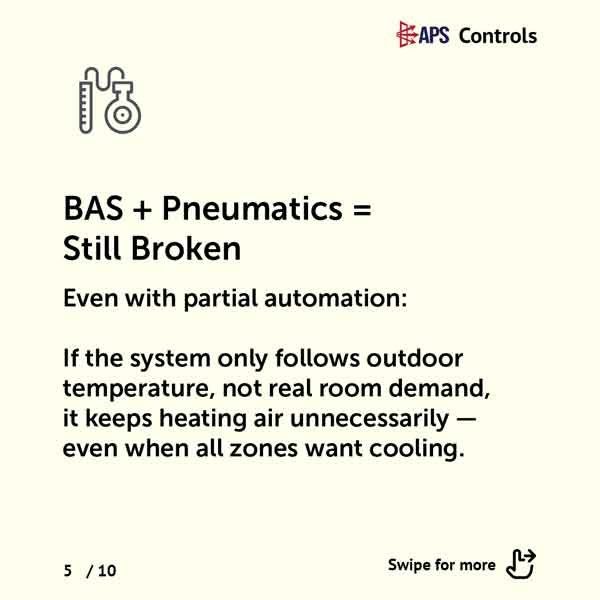
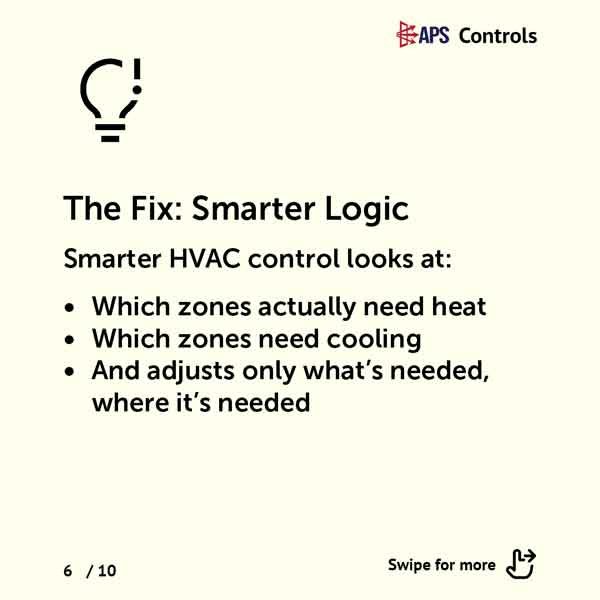

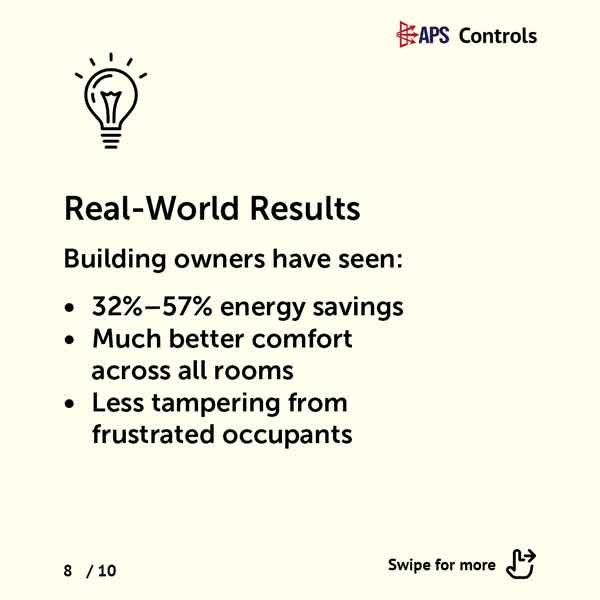

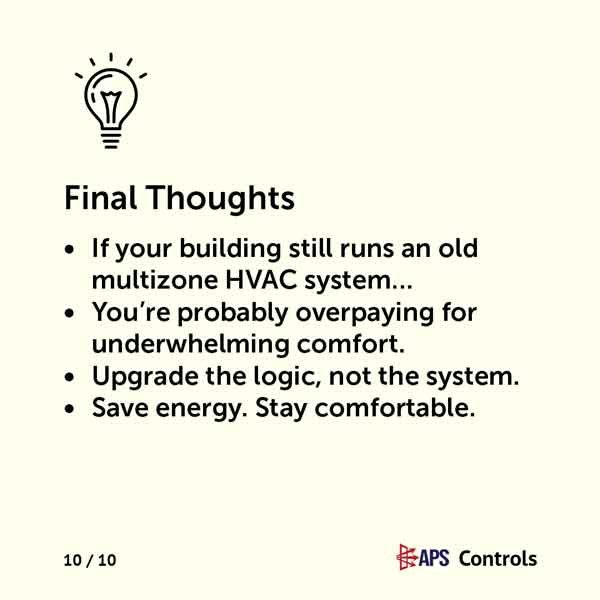
What’s the problem?
Traditional multizone HVAC systems waste a lot of energy and often don’t keep rooms comfortable. These systems use both hot and cold air ducts and mix the air based on room thermostats—but the system components don’t talk to each other properly.
What goes wrong?
- The hot air (hot deck) gets hotter when it’s cold outside, even if no room needs heating.
- Cold air (cold deck) stays fixed at 13°C.
- The fans run all the time, using energy even when not needed.
- Room thermostats send signals, but the hot and cold air controls don’t “hear” them.
- This can make rooms too hot or too cold and uses more energy than necessary.
Even systems with partial automation (BAS + pneumatics) still miss key information, like when a room only needs cooling. The result: less comfort and higher bills.
The Fix: Smarter Control Logic
Modern upgrades use smarter logic to:
- Adjust heating based on the actual needs of the coldest room.
- Adjust cooling based on the warmest room’s needs.
- Allow the system to turn off or slow down at night if the building is empty.
- Only use the minimum heating or cooling needed to keep rooms comfortable.
This smarter logic helps the system:
- Understand which rooms need heating or cooling (and by how much).
- Only send hot air to rooms that need heat and cold air to rooms that need cooling.
- Prevent tampering by detecting unusual temperature changes (like someone putting ice on a sensor).
Real Results
- Building owners have reported energy savings of 32% to 57% after making these upgrades.
- Comfort has improved in all updated systems.
Night Settings & Tamper Protection
- At night, the system can turn off or run lightly if safe to do so (no people, animals, etc.).
- Special programming can detect when someone tries to trick the system and temporarily ignore those sensors.
Dual duct systems have identical logic as per pages 5.43B, 5.43C, and 5.43D of the APS Training Manual.
